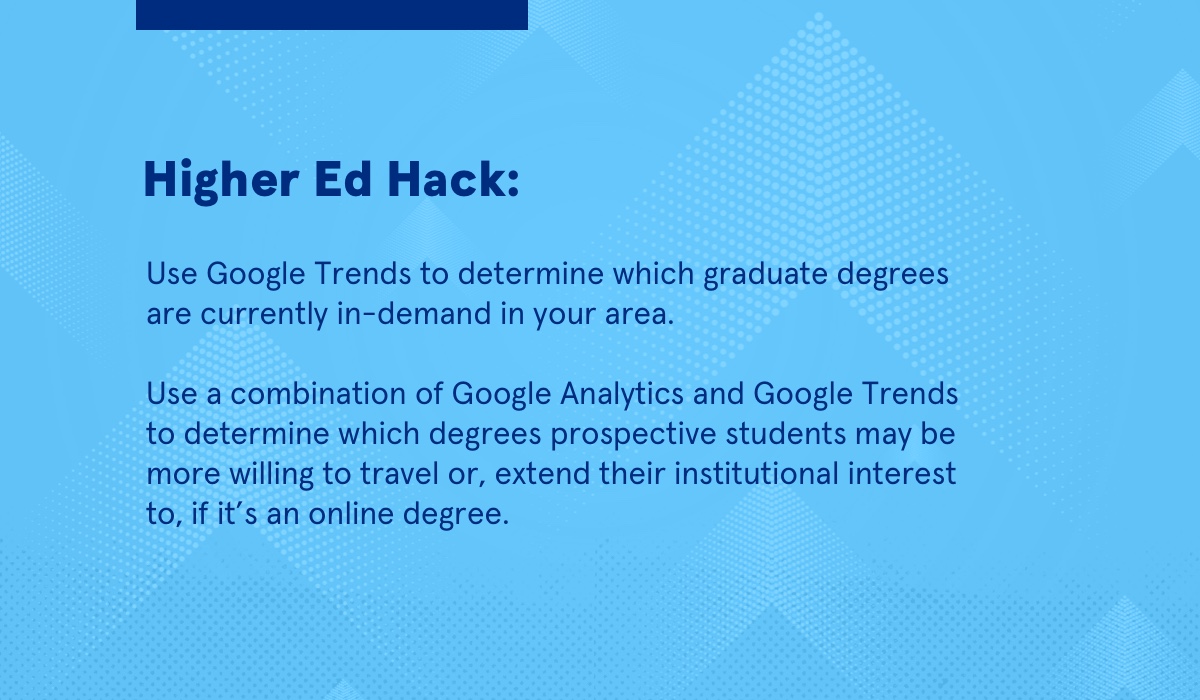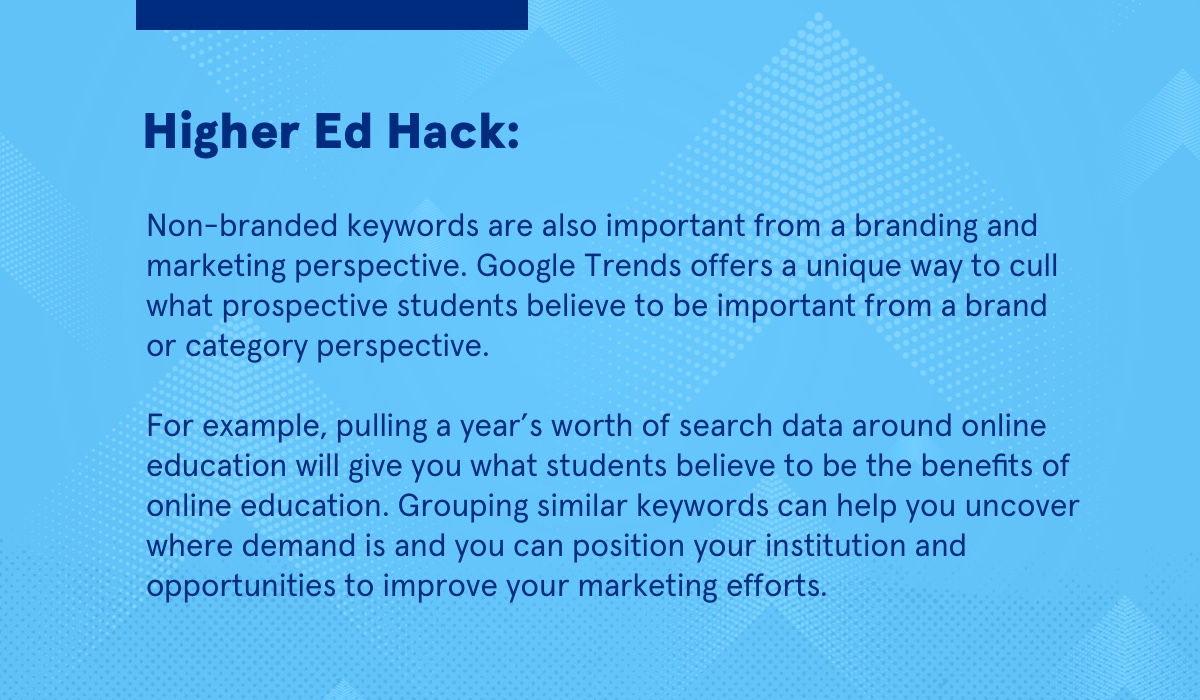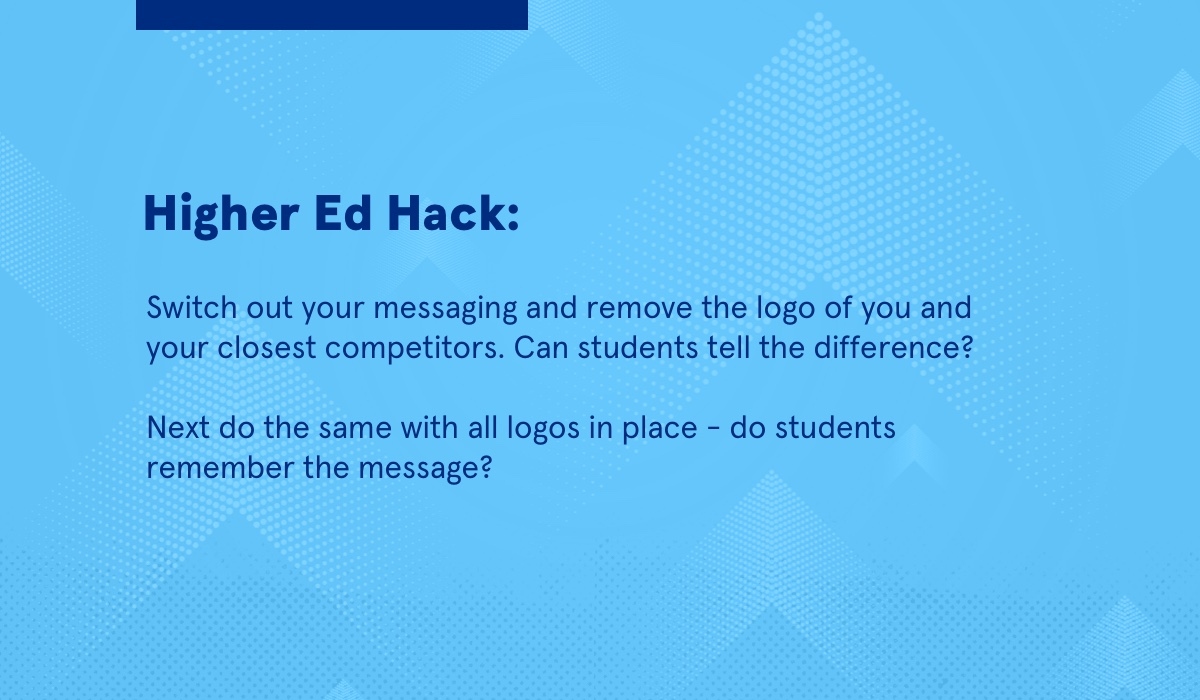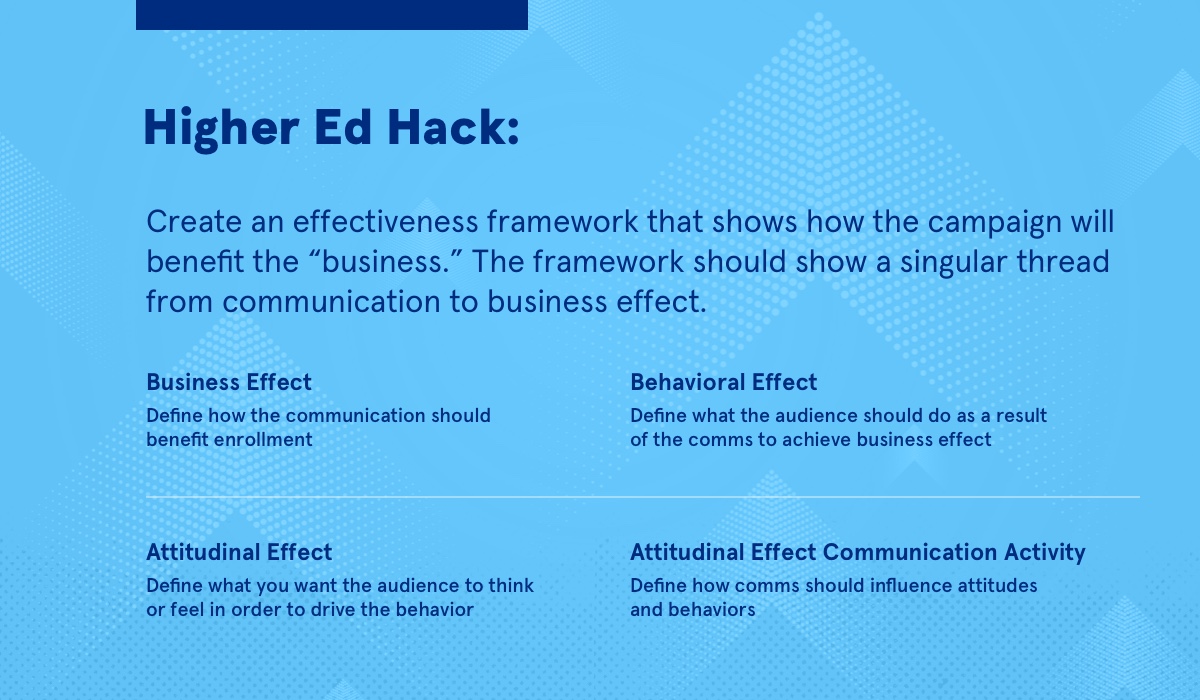What was once a bright spot during the pandemic is now facing a year-over-year enrollment decline amid an increased effort to boost enrollment. According to EAB, enrollment leaders are now taking ‘big bets’ on prioritizing graduate programs. Although organizational challenges were indicated as a barrier to growth, increased competition from primarily online institutions, budget limitations and the growth of programs offered have presented those tasked with graduate program marketing with a challenging environment to achieve those results.
At least outside our category, what often follows market saturation and product (or program in this case) parody is the commodification of communications. If graduate program marketers are going to win this bet on boosting enrollment, they must bring the same distinction and innovation that often happens inside their classrooms into their marketing efforts, and it starts with focus.
Simplicity (i.e., focusing on a few efforts) can be a marketer’s secret weapon. And how we achieve simplicity through strategy, takes focus. This has become incredibly important when audiences have become fragmented, competition has increased and the category has constricted.
To get there, this article provides four tips to help graduate program marketers bring focus to their strategy in a way that may ultimately lead to a stronger positioning in the market and improve the likelihood that those ‘bets’ pay off. First, let’s discuss how strategy can meet this goal.








